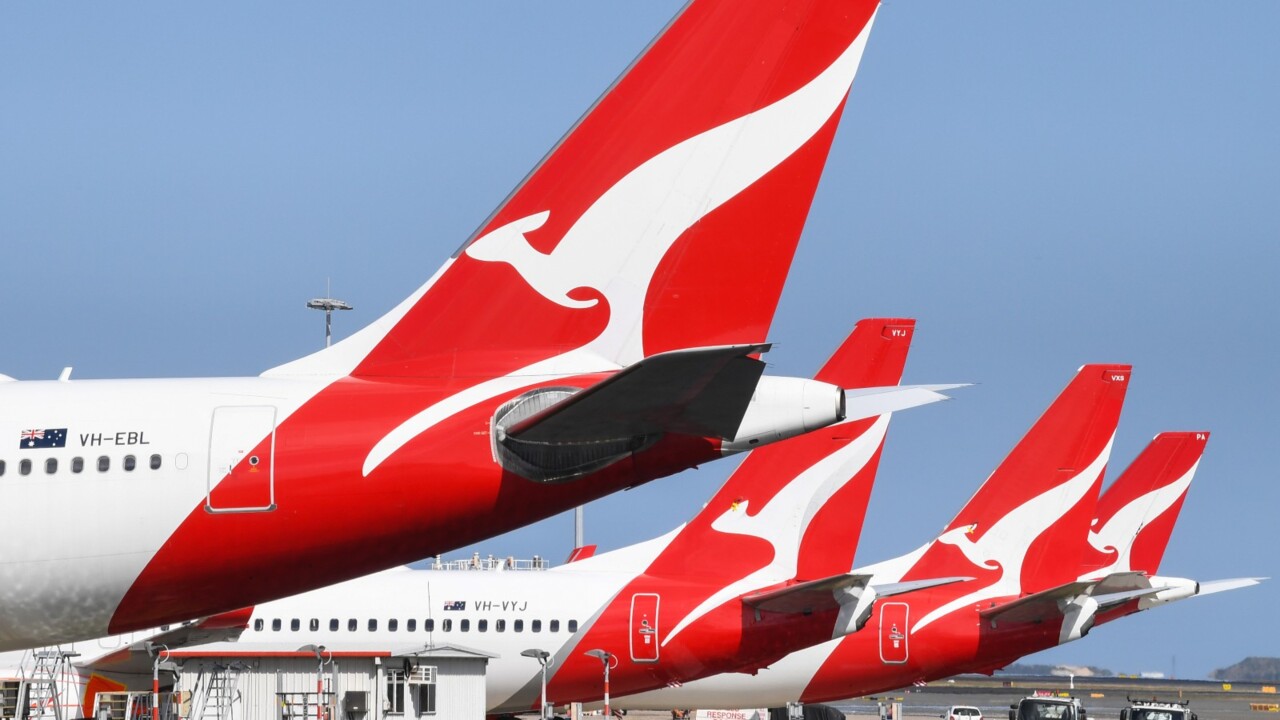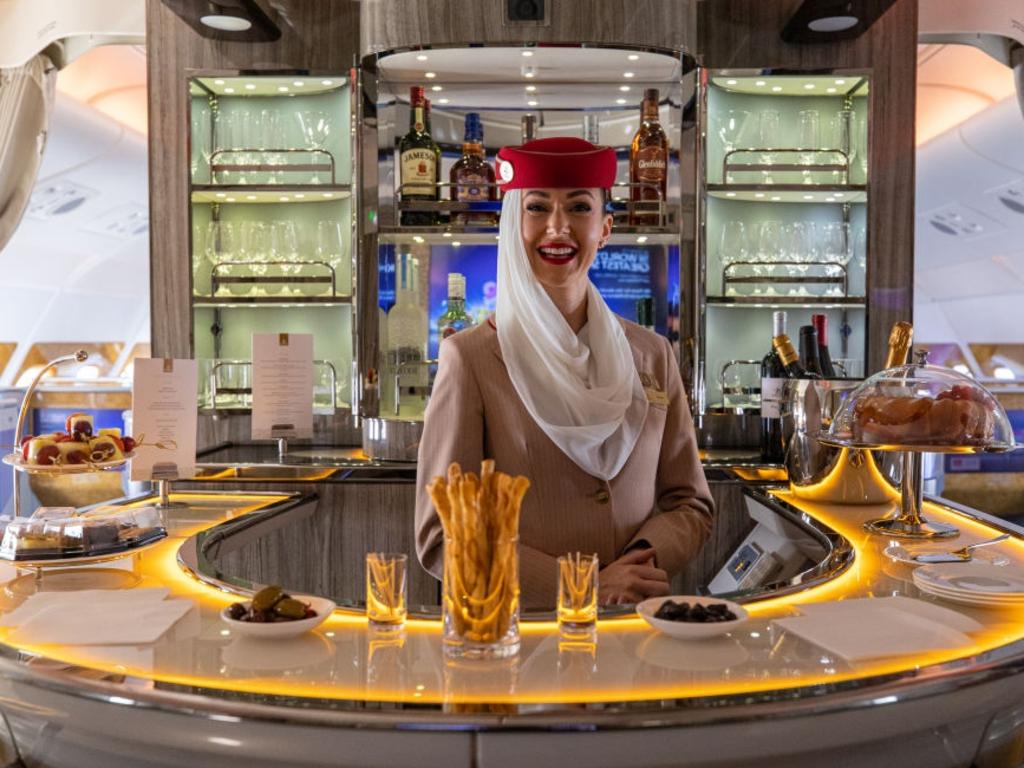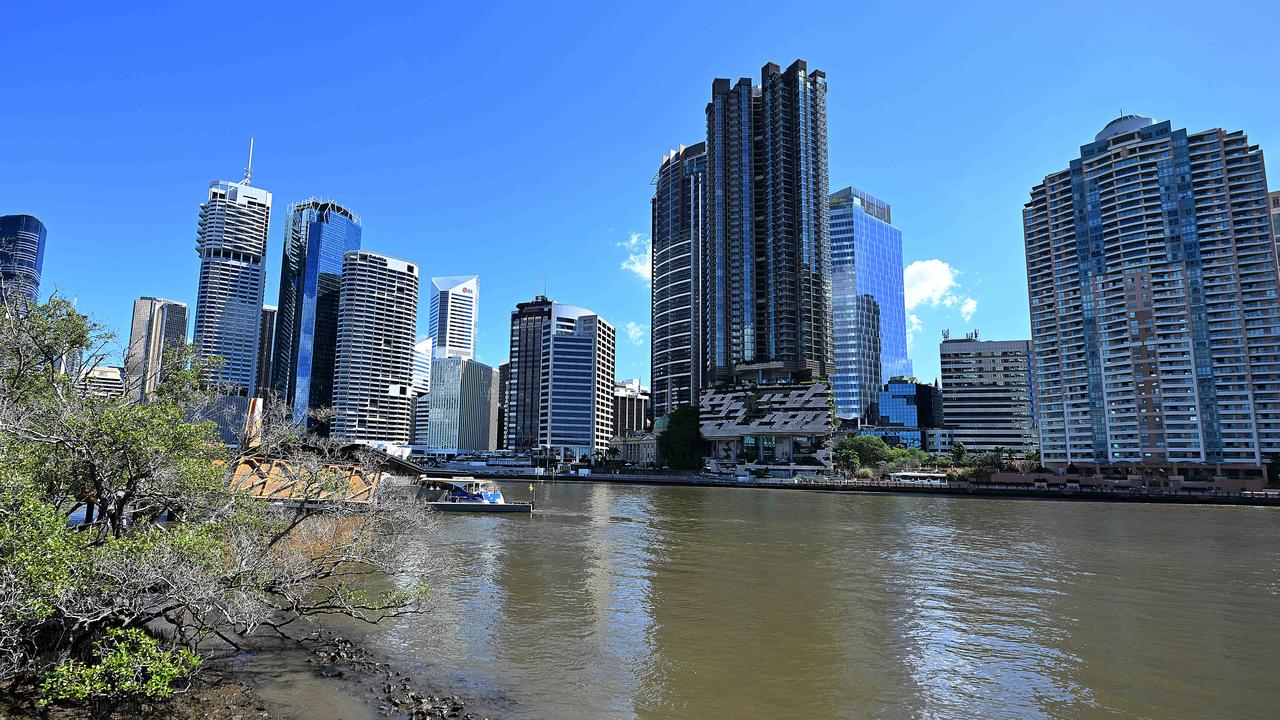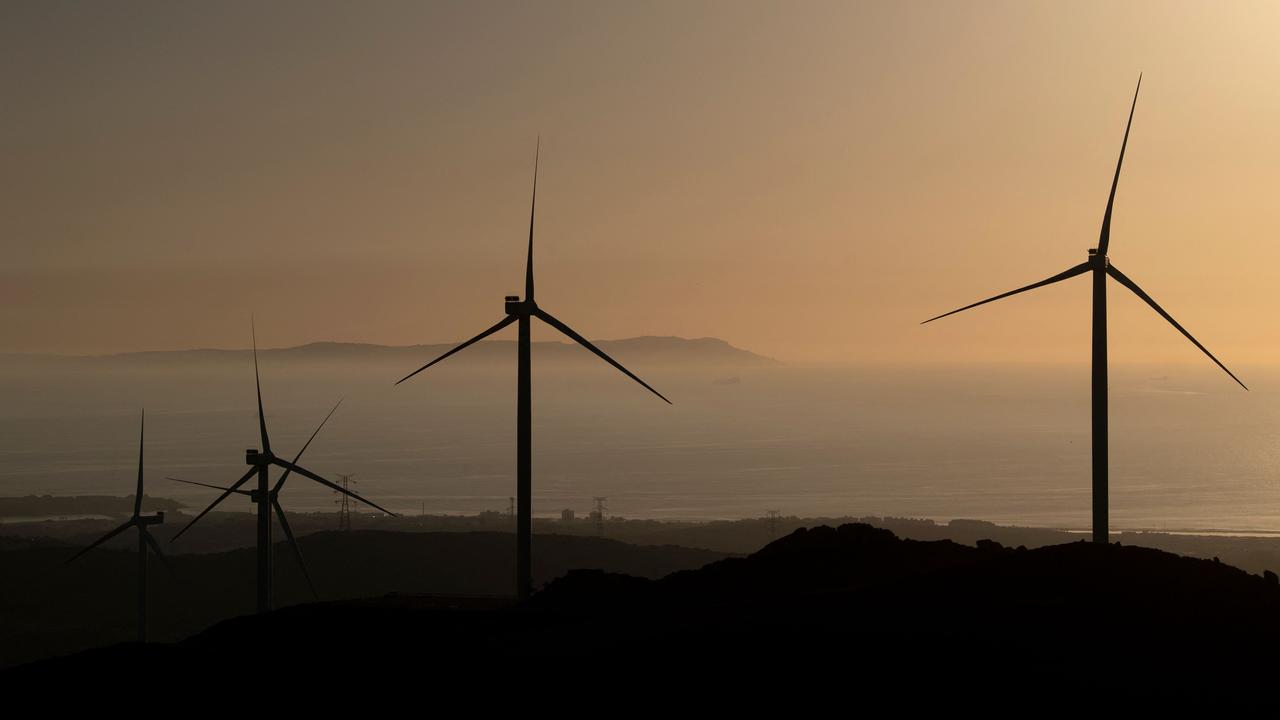Qantas A380 fleet out of the desert after almost 1000 days in storage
After almost 1000 days in desert storage, Qantas’ A380 fleet is finally back together following the airline’s ‘biggest ever engineering challenge’.

Business
Don't miss out on the headlines from Business. Followed categories will be added to My News.
The last Qantas A380 has left desert storage after almost 1000 days in mothballs, to begin the long process of being returned to commercial service.
VH-OQI was among 12 superjumbos exiled to Victorville, California at the start of Covid-19 as speculation swirled about the A380s’ relevance post-pandemic.
It was during this time, Qantas made the decision to break two of the double-decker aircraft up for parts, and eventually bring ten back into service as demand returned.
When borders reopened in late 2021, the strength of the travel rebound was such that Qantas and other airlines, could not get the A380s back in the air fast enough.
Qantas chief executive Alan Joyce recently lamented that the global rush to get A380s back into service was tying up maintenance, repair and overhaul services, pushing out the timeline for their return.
Seven A380s are currently flying Qantas routes, with the remaining three due to take to the skies next year, once cabin reconfigurations and maintenance checks are completed.
Before being cleared to carry passengers again, VH-OQI will undergo what’s known as a “12-year check” in Abu Dhabi involving a complete dismantling and rebuild of the massive aircraft.
As part of that process, all four engines are taken off, landing gear removed and replaced with a new set and the mind-boggling array of electronic systems are taken out and rechecked.
Qantas’ executive manager of engineering Scott McConnell said the entire operation took about 4000 hours to complete making it the biggest engineering challenge the airline had faced.
“While the conditions in the Mojave Desert were good for safely storing aircraft, they did create some unique challenges for our engineers,” Mr McConnell said.
“They worked through storms and snow, extreme heat, and there was lots of very fine dust around.”
He said smaller parts were replaced throughout the storage process, including things like wheels and brakes.
“The aircraft also has a number of items on board that have an expiry date, like the escape slides, fire extinguishers and oxygen bottles, so they all had to be replaced,” Mr McConnell said.
“All of the systems were checked, some of these tests taking many days to complete.”
After almost 1000 days the 100-strong team of engineers involved in the marathon storage were “really proud to see them back in the skies”, he said.
“It was a massive effort from a dedicated team of people,” Mr McConnell said.
“They are an incredibly popular aircraft, and we know that people do seek them out for long haul flying.”
Despite being among the older aircraft in the Qantas wide-body fleet, the lack of a ready replacement for the 500-seater superjumbos meant they could keep flying until the end of the decade.
As the largest operator of A380s, Emirates planned to fly the four-engine jets until 2035, and other airlines like Etihad, Singapore Airlines and British Airways also remained committed.
The main disadvantage of the aircraft was their lack of fuel efficiency, putting them at odds with the aviation industry’s goal to be carbon-neutral by 2050.
Airbus executive vice president of communications and corporate affairs Julie Kitcher said A380s could operate on 50 per cent sustainable aviation fuel, but the manufacturer had no plans to restart production of the double-deckers.
“The A380s is a super aircraft, and we’ll continue to support it for many, many years to come,” Ms Kitcher said.
“But the trend from the wider customer base has moved very much to long haul on two engines, and we don’t see that trend changing again.”
More Coverage
Originally published as Qantas A380 fleet out of the desert after almost 1000 days in storage





